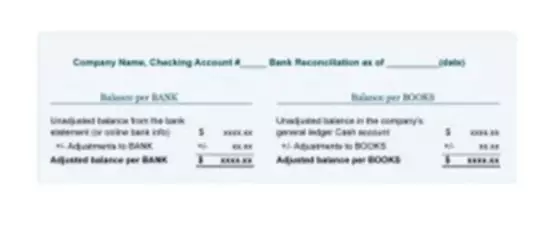Content

However, revenue collection agencies do not need to know the specific inventory items, but rather the costs of goods sold and net income, which are both calculated using the inventory balance. In accounting, inventory is classified as a current asset and will show up as such on the business’s balance sheet. When recording an inventory item on the balance sheet, these current assets are listed by the price the goods were purchased, not at the price the goods are selling for.

Inventory accounting is the practice of correctly valuing this business asset, so it can be properly documented in end-of-year financial records. You’ve been struggling too long if you think that accounting for inventory has to be difficult. Accounting for inventory can be simple with the right inventory accounting software. ZarMoney is a leading-edge inventory accounting software that’s designed to serve your needs in the best possible way. Inventory is recorded at the lower of cost or Net Realizable Value (NRV) less reasonable cost of sale or disposal, according to Generally Accepted Accounting Principles (GAAP). Inventory is also reviewed for slow-moving items and obsolescence to determine whether a reserve or write-off is required to fairly value the inventory in the financial statements.
Calculating COGS
It will then appear on your Income Statement when the item is sold, giving more accurate profitability reports. You’ll still record the payment of wages at the time of the build, so your cash reporting will also be correct. Similarly, if you outsource your manufacturing, you’ll need to transfer the correct amount from the Income Statement “Manufacturing” code into your “Inventory / Assets” code.
Inventory is an asset, and as such, it can significantly impact the bottom line. As a result, it is important to understand how inventory accounting works to ensure that your financial statements are accurate. When the purchase invoice is later reconciled against the purchase order, make any corrections. If your accounting system is not integrated with your inventory management system, then you’ll lose this detail.
A Guide to Inventory Accounting Methods
You must record the sale on your operating account when selling inventory to a non-dept entity or individual. If you sell inventory and record an accounts receivable, you must use an accounts receivable object code. All departments receiving revenue (internal and/or external) for selling products to customers must maintain inventory records and conduct a physical inventory at least once per year. Businesses can make strategic decisions about pricing, production, and marketing by understanding where profits can be increased. In short, inventory accounting is a powerful tool that can help businesses to improve their bottom line.
Periodic inventory systems determine the LIFO, FIFO, or weighted average value at the end of every period, whereas perpetual systems determine the inventory value after every transaction. The https://www.bookstime.com/‘s balance may be updated with adjusting entries or as part of the closing entry process. The first adjusting entry clears the inventory account’s beginning balance by debiting income summary and crediting inventory for an amount equal to the beginning inventory balance. Understanding trends in purchasing and sales can help companies optimize their stock levels, improving customer relations, cash flow, and profitability.
History of IAS 2
Therefore, the stock itself is not income, but the value of the inventory is required for determining income. Opening inventory balance and ending inventory balance will need to be recorded on the balance sheet each period. In our next and final chapter, we’ll take a look at inventory management systems – including how to determine when it’s time to start using an automated system, and choosing the best one for your company. So we highly recommend employing the services of a professional bookkeeper and/or chartered accountant when it comes to compiling financial records and submitting tax returns.
Your asset value on the Balance Sheet is decreased, and your Cost of Sale on the P&L is increased, based on the actual value of the items that have been shipped. When you buy more inventory, the purchase value is added into your assets (Balance Sheet), not into the P&L, as it would be with Periodic accounting. The recorded cost for the goods remaining in inventory at the end of the accounting year are reported as a current asset on the company’s balance sheet.
Bookkeeping Entries for Inventory Transactions
Calculate inventory cost by adding the beginning inventory to inventory purchases and subtracting the ending inventory. Inventory holding costs, or carrying costs, are those related to storing unsold inventory. Costs include storage space, handling the stock, the loss to the company if the items become obsolescent or deteriorated and the capital cost relating to unsold inventory. However, when a customer buys 60 units, the difference in these cost flow assumptions is clear. In FIFO, the ending inventory cost ends up higher to reflect the increase in prices.
- Even though you have bought $50 of stock, at the end of the month you are $75 down on the previous month (opening balance $100 – closing balance $25).
- Inventory is a key current asset for retailers, distributors, and manufacturers.
- Average Cost (or weighted-average) inventory accounting method is totally different to the previous two.
- This Module enables the Perpetual Inventory Account posting on the Inventory transactions.
It’s highly likely that a business will not sell the entirety of its inventory at the end of each accounting period. Meaning any on-hand, unsold stock becomes an asset that must be valued and included in financial statements. Under perpetual inventory procedure, the Merchandise Inventory account is continuously updated to reflect items on hand, and under the periodic method we wait until the END to count everything. If you own a merchandising business—for example, a shoe store that purchases shoes from manufacturers or wholesalers and sells these shoes to consumers—your inventory accounting system is somewhat straightforward.
Recording Transactions for Goods Sold- Steps in the Inventory Accounting Process
If so, the gross profit method or the retail inventory method can be used to derive an approximate ending balance. Meaning the inventory management functionality within them is relatively basic and underdeveloped. For items that are interchangeable, IAS 2 allows the FIFO or weighted average cost formulas. [IAS 2.25] The LIFO formula, which had been allowed prior to the 2003 revision of IAS 2, is no longer allowed. Standard costing is when companies assign the expected (or standard) costs of material, labor and overhead to inventory, rather than the actual costs.
What are the 4 types of inventory?
There are four different top-level inventory types: raw materials, work-in-progress (WIP), merchandise and supplies, and finished goods. These four main categories help businesses classify and track items that are in stock or that they might need in the future.
Inventory accounting is all about how a business would show the stock it holds in its financial records – balance sheets, profit & loss (P&L) reports, etc. This is typically more complex than it sounds as inventory is often a ‘live figure’ that’s constantly changing as sales are made and more stock purchased. The main advantage of inventory accounting is to have an accurate representation of the company’s financial health. However, there are some additional advantages to keeping track of the value of items through their respective production stages.
How Inventory Accounting Works
To ensure accuracy and efficiency, sales order processing, profit and loss tracking, and asset management need to function from a single software platform. A company may use either a periodic inventory system or perpetual inventory system to maintain its inventory records. A periodic system https://www.bookstime.com/articles/inventory-accounting relies upon a physical count to determine the ending inventory balance, while a perpetual system uses constant updates of the inventory records to arrive at the same goal. That means keeping accurate and up-to-date financial records for business management purposes and tax return filing.
